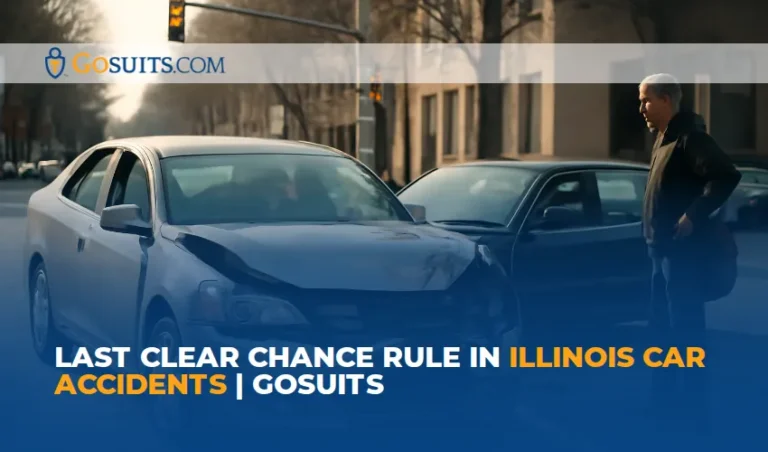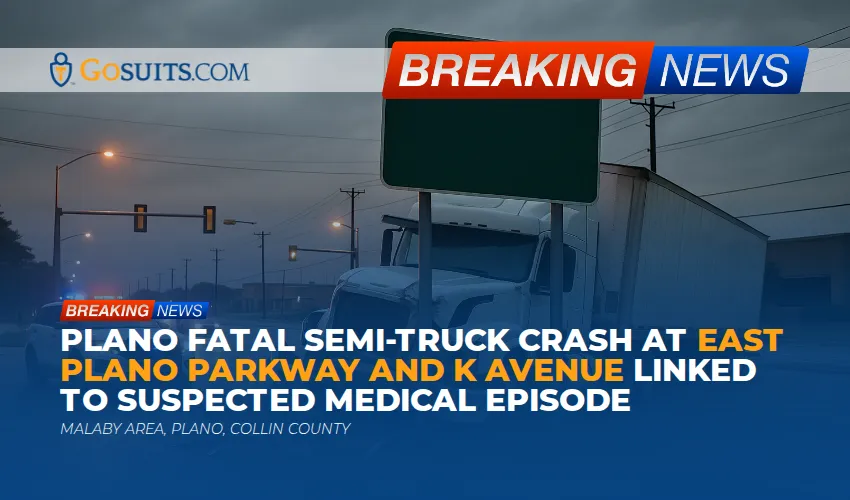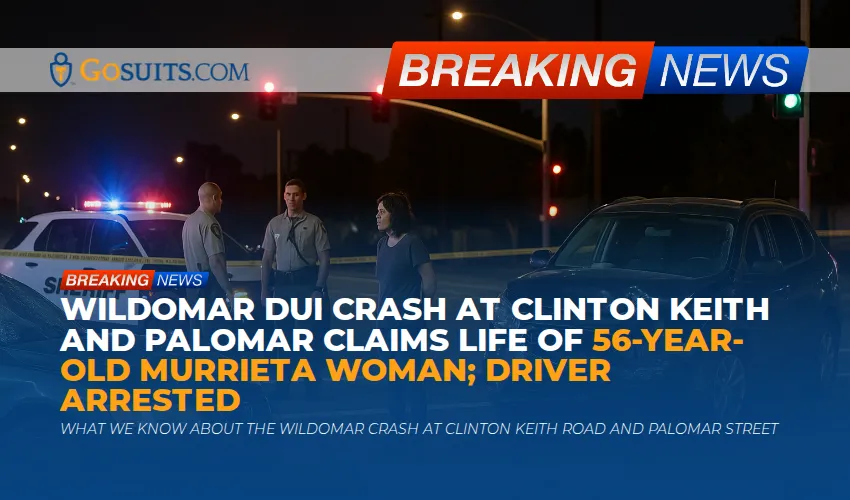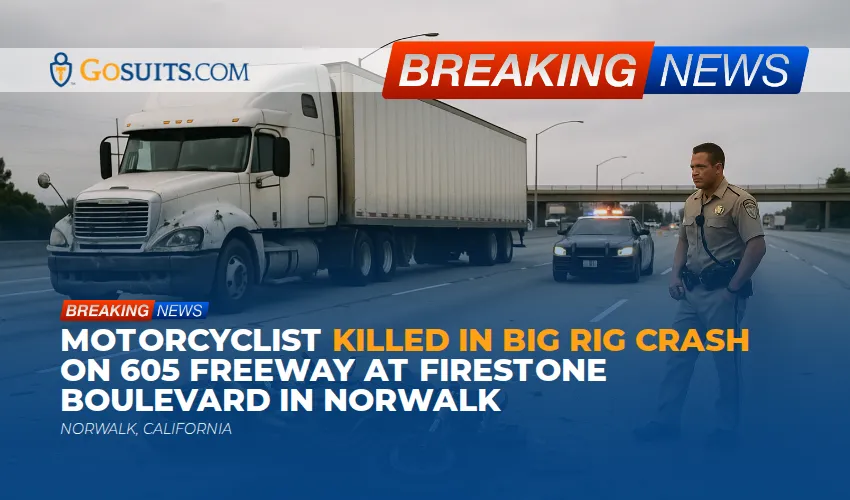- What is the last clear chance rule, and does it apply to Illinois car accidents?
- How did Illinois move from contributory negligence to modified comparative negligence?
- What does Illinois’s 51 percent bar rule mean in a car crash claim?
- Is the last clear chance doctrine still relevant in any Illinois crash scenarios?
- How do Illinois courts and insurers assess fault in rear-end and intersection collisions?
- What is the sudden emergency doctrine, and how does it interact with Illinois comparative negligence?
- What evidence helps prove who had the last opportunity to avoid a collision?
- How do plaintiffs and defendants frame last clear chance issues under Illinois law?
- How do Illinois rules compare to Texas and California on comparative fault and last clear chance?
- What deadlines and procedural rules matter for Illinois car accident lawsuits?
- What common insurance defenses arise, and how are they addressed?
- What practical steps should you take after a crash in Illinois to protect a comparative fault claim?
- How can GoSuits help with an Illinois car accident case?
- Where can you find reliable sources and further reading?
What is the last clear chance rule, and does it apply to Illinois car accidents?
The last clear chance rule, also called the discovered peril doctrine, developed in contributory negligence states. It allowed an injured person who was also negligent to recover if the other driver had the final, clear opportunity to avoid the crash but failed to do so. Authoritative definitions explain that modern comparative negligence systems have largely displaced this doctrine, folding those concepts into ordinary fault apportionment rather than treating last clear chance as a separate rule. See the Legal Information Institute’s entries for last clear chance and contributory negligence.
Illinois does not apply last clear chance as an independent doctrine in car accident cases. Illinois follows modified comparative negligence by statute. Fault questions that last clear chance once addressed are handled within comparative fault allocations under Illinois law. See 735 ILCS 5/2-1116, the state’s comparative negligence statute, which governs how fault is compared and how recovery is reduced or barred in civil injury cases arising from motor vehicle crashes. The statute is available on the Illinois General Assembly website at 735 ILCS 5/2-1116.
How did Illinois move from contributory negligence to modified comparative negligence?
Historically, Illinois followed contributory negligence, which barred any recovery if a plaintiff was even slightly at fault. That approach proved harsh in multi-vehicle collisions. Illinois shifted to comparative fault and now uses a modified comparative negligence framework defined by statute. Under this approach, the fact finder compares fault among all parties and assigns percentages. The jury no longer needs a stand-alone instruction on last clear chance because the central question is each person’s share of responsibility, including who could or should have avoided the collision in the final moments.
The Illinois statute that governs comparative fault in personal injury actions is 735 ILCS 5/2-1116. It states that a plaintiff’s damages are reduced by the percentage of fault attributable to the plaintiff and that recovery is barred if the plaintiff’s contributory fault exceeds 50 percent. See 735 ILCS 5/2-1116.
What does Illinois’s 51 percent bar rule mean in a car crash claim?
Illinois applies a modified comparative negligence rule with a 51 percent bar. In practical terms:
- If you are 50 percent or less at fault, you may recover damages, reduced by your percentage of fault.
- If you are 51 percent or more at fault, you are barred from recovering damages.
Example: In a Chicago IL rear-end collision, if you are found 20 percent at fault for braking abruptly without a functioning brake light, and the other driver is 80 percent at fault for following too closely, your damages would be reduced by 20 percent. But if the fact finder concludes you were 60 percent at fault, your claim would be barred under 735 ILCS 5/2-1116.
This framework replaces any need to invoke a separate last clear chance doctrine. The jury can consider who had the better opportunity to avoid the crash when assigning fault percentages.
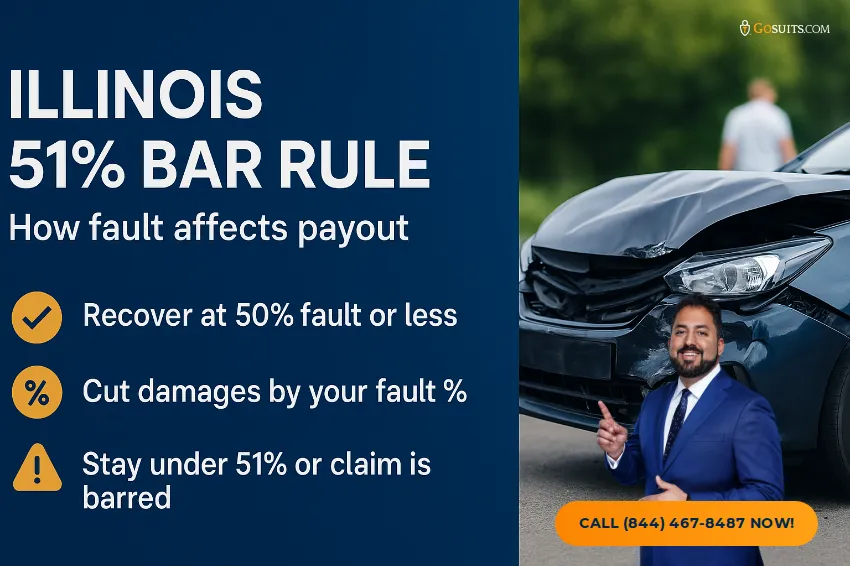
Is the last clear chance doctrine still relevant in any Illinois crash scenarios?
In Illinois, last clear chance is not applied as a separate rule. That said, the facts that used to trigger last clear chance arguments still matter as part of comparative negligence:
- Discovered peril facts still carry weight. If the defendant driver saw or should have seen you in a position of danger and had time and ability to avoid the collision, the jury can assign a greater share of fault to the defendant during comparative fault analysis. See LII’s overview of last clear chance and how modern systems treat it.
- Failure to keep a proper lookout, following too closely, and speeding remain classic negligence theories. Those go directly to the duty to exercise reasonable care and can drive the fault percentages under 735 ILCS 5/2-1116.
Bottom line: the label “last clear chance” is not necessary. The same evidence is presented to show who had the last, reasonable opportunity to avoid a crash and how fault should be allocated.
How do Illinois courts and insurers assess fault in rear-end and intersection collisions?
Rear-end and intersection crashes are common in Cook County, DuPage County, Lake County IL, Will County IL, Kane County IL, McHenry County IL, and across cities like Chicago, Aurora, Naperville, Joliet, Springfield, Bloomington, Evanston, Waukegan, Schaumburg, Peoria IL, Rockford IL, and Champaign County IL. The Illinois Department of Transportation publishes annual crash statistics showing hundreds of thousands of police-reported crashes statewide in recent years. See IDOT’s Crash Facts and Statistics page at idot.illinois.gov. Nationally, rear-end collisions are among the most frequent multi-vehicle crash types according to federal safety reporting. See the National Highway Traffic Safety Administration’s traffic safety facts resources at NHTSA Crash Data and Systems.
In Illinois, liability in these scenarios often turns on familiar rules of the road and reasonable care:
- Rear-end crashes: The trailing driver typically must maintain a safe following distance and keep a proper lookout. But the lead driver can share fault for sudden braking without cause, defective or nonfunctioning brake lights, or improper lane changes. The fact finder compares both drivers’ behavior under 735 ILCS 5/2-1116.
- Intersection crashes: Right-of-way, traffic signals, stop signs, speed, and line-of-sight all matter. If one driver runs a red light in Chicago IL and the other is speeding through a yellow, both may share fault. Allocation turns on who reasonably could have avoided the crash in the final seconds.
- Left-turn collisions: The turning driver must yield to oncoming traffic. Yet oncoming drivers can share fault if they were speeding or distracted, reducing their recovery accordingly.
Illinois’s comparative negligence approach lets juries and adjusters consider fine-grained, practical questions like visibility, sight distances, reaction times, and evasive options. The concepts that once animated last clear chance are now part of that overall analysis.
What is the sudden emergency doctrine, and how does it interact with Illinois comparative negligence?
The sudden emergency doctrine recognizes that a person confronted with a sudden and unexpected situation not of their own making is judged by how a reasonably careful person would respond under those emergency conditions. Modern treatments usually fold this into the ordinary reasonable care standard rather than treating it as a separate defense instruction. See LII’s overview on the sudden emergency doctrine.
In Illinois automobile cases, the principle is that a driver confronted with a sudden hazard may not be held to the same split-second judgments as in calm conditions, but the driver still must act reasonably. The comparative fault statute, 735 ILCS 5/2-1116, allows juries to reflect emergency context within the fault percentages. For example, if black ice in Lake County IL creates a sudden skid, a driver who brakes and steers as a reasonable person might in that emergency could receive a reduced or zero share of fault, while a speeding driver who triggered the emergency might receive more.
What evidence helps prove who had the last opportunity to avoid a collision?
Even though Illinois does not apply last clear chance as a separate doctrine, you can still use evidence that shows who most reasonably could have avoided the crash. Helpful proof includes:
- Dashcam and traffic camera video: Video from Chicago IL red light cameras or neighborhood cams in places like Evanston IL or Schaumburg IL can show headlight illumination, brake lights, lane position, and reaction times.
- Event data recorders: Many vehicles record pre-impact speed, braking, and throttle inputs. These data can clarify whether a driver attempted to slow or steer away.
- Physical evidence: Skid marks, yaw marks, debris fields, and point of rest help reconstruct trajectories and reaction windows.
- Witness testimony: Observers can describe whether a driver appeared distracted or had a clear, unobstructed view.
- Weather and lighting data: Visibility affects what drivers “should have seen.” Public weather archives can contextualize fog, rain, or snow in Rockford IL or Peoria IL.
- Cell phone records: Call and text logs can support or refute distraction claims.
- Roadway design records: Intersection timing and sightline diagrams can show whether a driver had adequate distance and time to avoid a crash.
All of these help a jury weigh duty, breach, causation, and damages, and then allocate comparative fault under 735 ILCS 5/2-1116.

How do plaintiffs and defendants frame last clear chance issues under Illinois law?
Because last clear chance is not a separate rule in Illinois, both sides integrate these arguments into comparative negligence themes.
How might a plaintiff present the case?
- Duty and visibility: Emphasize that the defendant had a clear, unobstructed view and ample time to react.
- Reasonable evasive options: Show safe alternatives like braking, lane change, or horn use were feasible.
- Rule-of-the-road violations: Highlight speeding, following too closely, failure to yield, or distracted driving.
- Apportionment fairness: Argue that any plaintiff fault was minor compared to the defendant’s failure to avoid an avoidable collision.
How might a defendant respond?
- Shared causation: Argue the plaintiff’s decisions created a sudden hazard, leaving little reaction time.
- Emergency context: Frame the event as a sudden emergency where the defendant acted reasonably.
- Comparative percentages: Seek to move the plaintiff’s share of fault above 50 percent under the 51 percent bar rule.
- Mitigation and damages: Challenge causation and damages to reduce exposure even if some fault is found.
How do Illinois rules compare to Texas and California on comparative fault and last clear chance?
Understanding other jurisdictions helps clarify how Illinois fits into the national landscape.
- Illinois: Modified comparative negligence with a 51 percent bar. The last clear chance doctrine is not applied as a separate rule. See 735 ILCS 5/2-1116.
- Texas: Modified comparative negligence with a 51 percent bar under the proportionate responsibility statute. See Texas Civil Practice and Remedies Code § 33.001 at the official legislative site: statutes.capitol.texas.gov. Last clear chance likewise does not operate as a separate doctrine in modern Texas negligence practice.
- California: Pure comparative negligence since the California Supreme Court’s decision in Li v. Yellow Cab Co. of California. California does not rely on last clear chance as a stand-alone doctrine because comparative negligence allows the jury to assign fault percentages across the board. See general overview of comparative negligence at LII.
For injured people in Chicago IL, Springfield IL, or Waukegan IL who are comparing forum rules due to multi-state crashes involving Texas or California drivers, these differences matter. Illinois and Texas use a 51 percent bar. California allows recovery even if a plaintiff is more than 50 percent at fault, with damages reduced proportionally.

What deadlines and procedural rules matter for Illinois car accident lawsuits?
Illinois law sets strict deadlines. For most personal injury claims arising from car accidents, the limitations period is two years from the date of injury. See 735 ILCS 5/13-202 at the Illinois General Assembly site: 735 ILCS 5/13-202. Additional timelines may apply for claims against government entities, including shorter notice requirements. Procedural rules also govern venue and service of process for cases filed in counties such as Cook County, DuPage County, or Will County IL.
Because comparative negligence allows defendants to argue that you share fault, evidence preservation should begin immediately. Quick action can secure vehicle data, video footage, and witness statements that might otherwise be lost within days or weeks.
What common insurance defenses arise, and how are they addressed?
In Illinois comparative negligence car accident cases, insurers frequently raise defenses tied to last clear chance concepts, just without that label:
- You had the last opportunity to avoid: Adjusters argue you could have braked earlier, checked mirrors, or seen the hazard sooner. Counter with event data, reaction time analysis, and sightline measurements.
- Sudden emergency: The insurer claims a deer darted into traffic or the plaintiff cut in unexpectedly. Show whether the defendant was speeding, distracted, or following too closely, which undercuts sudden emergency framing.
- Comparative fault inflation: Efforts to push your fault above 50 percent under 735 ILCS 5/2-1116. Counter by emphasizing reasonable conduct, compliance with traffic laws, and the other driver’s clear violations.
- Causation disputes: Arguments that preexisting conditions or another incident caused your injuries. Medical records and expert testimony can clarify crash-related causation.
What practical steps should you take after a crash in Illinois to protect a comparative fault claim?
What you do in the first hours and days can strongly influence comparative fault arguments. Consider these steps:
- Report the crash to law enforcement and seek immediate medical evaluation if you are hurt.
- Document the scene with photos and video of vehicle positions, skid marks, traffic controls, and lighting conditions.
- Identify witnesses and collect contact information before they leave.
- Preserve electronic data, including dashcam video and vehicle event data recorder information.
- Request nearby footage from businesses, residences, and city cameras. In Chicago IL and surrounding suburbs, many intersections and storefronts have cameras with short retention cycles.
- Avoid speculative statements about fault at the scene or to insurance representatives.
- Consult with legal counsel promptly so evidence preservation letters and investigation steps can begin immediately.
How can GoSuits help with an Illinois car accident case?
We understand the stress you may be facing after a crash in Illinois. Questions about the last clear chance rule, comparative negligence, and the 51 percent bar can be confusing. Our focus is on careful, fact-driven investigation and advocacy to present your strongest case under Illinois law.
How do availability and communication work for you?
- Available 24/7: You can reach us any time for an immediate free consultation. We know collisions do not follow business hours, so we do not either.
- Multilingual service: We offer multilingual client support, including 24/7 Spanish and Farsi speakers, so you can communicate comfortably and clearly about what happened and what you need.
- Direct updates: We keep you informed at each stage, from investigation to negotiation and litigation. You have access to your case team and prompt responses to calls, emails, or texts.
What are our fee policies and cost transparency?
- No win, No Attorney Fees: You do not pay attorney’s fees unless we obtain a recovery for you.
- No hidden administrative fees: Our agreements are clear and straightforward. You will not be surprised by undisclosed charges.
How do our tools and case workflow help your claim?
- Proprietary personal injury software: We built an internal platform that improves speed and accuracy throughout your case: investigation, records collection, damages modeling, demand preparation, negotiation, filing, and discovery. We use technology to push your case forward and to counter the insurance company’s tactics.
- Evidence-first approach: We move quickly to secure dashcam and intersection video, vehicle event data, and witness statements across communities like Chicago IL, Aurora IL, Naperville IL, Joliet IL, Waukegan IL, and beyond.
- Comparative fault strategy: Our case plans address the 51 percent bar in Illinois head-on, making sure the record shows who had the time, distance, and ability to avoid the collision.
What is our experience and track record?
- 30 years of combined experience: Our team has litigated complex civil injury matters involving cars, trucks, and multi-vehicle collisions.
- More than 1,000 litigated cases: Settlement and verdict results are published on our website. See a selection of outcomes at gosuits.com/prior-cases.
- Complex litigation capability: In cases involving product defect issues, 18-wheeler collisions, brain or spinal injuries, and other high-stakes matters, we retain qualified testifying professionals within the state to establish liability and damages.
- Multi-state litigation: We litigate severe injury and complex cases in Texas, California, and Illinois. This multi-jurisdiction experience helps when crashes involve out-of-state drivers or insurance carriers.
- Awards:
- #1 settlements and verdicts across multiple U.S. counties according to TopVerdict.
- Top 100 Settlement in Texas.
- Sean Chalaki named Top 40 Under 40 by National Trial Lawyers.
- Recognized by Best Lawyers in 2023, 2024, and 2025.
- Recognized by Super Lawyers since 2021.
How is our firm different?
- Quality-over-quantity caseload: We are not a volume firm. We limit active matters to deliver careful attention to the details that drive liability and damages under Illinois comparative negligence.
- Trial-readiness: From the start, we prepare for the possibility of trial, which strengthens your position in negotiations and ensures readiness if litigation is needed.
- Local familiarity: From Cook County to DuPage County, Lake County IL, Will County IL, and Kane County IL, we understand local procedures and how fact finders evaluate evidence like reaction time, sightlines, and evasive possibilities.

What services do we provide specifically for Illinois car accidents?
- Immediate investigation: Scene preservation, video requests, EDR downloads, and witness interviews in Chicago IL and throughout the state.
- Legal analysis: Fault assessment under 735 ILCS 5/2-1116 and identification of all responsible parties and coverages.
- Claims handling: Communication with insurers, structured demands supported by evidence, and negotiation positioned for fair value.
- Litigation: If needed, filing suit, written discovery, depositions, expert development, motion practice, mediation, and trial.
Where are we located and how can we help right now?
We maintain offices with attorneys and staff available 24/7 to help immediately. If you are searching for an Illinois car accident lawyer near me or Chicago personal injury attorney near me, call anytime for a free consultation. We also serve clients with serious injuries in Texas and California, including Los Angeles CA, San Diego CA, San Francisco CA, Houston TX, Dallas TX, Austin TX, and San Antonio TX. We can start by preserving time-sensitive evidence today and walking you through next steps.
Reliable sources and further reading
- Illinois Comparative Negligence Statute: 735 ILCS 5/2-1116
- Illinois Statute of Limitations for Personal Injury: 735 ILCS 5/13-202
- Legal Information Institute: Last clear chance overview: law.cornell.edu/wex/last_clear_chance
- Legal Information Institute: Contributory negligence overview: law.cornell.edu/wex/contributory_negligence
- Legal Information Institute: Comparative negligence overview: law.cornell.edu/wex/comparative_negligence
- Legal Information Institute: Sudden emergency doctrine overview: law.cornell.edu/wex/sudden_emergency_doctrine
- Illinois Department of Transportation Crash Facts and Statistics: idot.illinois.gov
- NHTSA Crash Data and Systems (FARS, GES, etc.): nhtsa.gov/crash-data-systems
- Texas Proportionate Responsibility Statute: statutes.capitol.texas.gov/Docs/CP/htm/CP.33.htm
